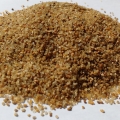We obtained data on rates marketed online by hunting guide
Information collection and methods
Websites delivered a number of choices to hunters, needing a standardization approach. We excluded internet sites that either
We estimated the contribution of charter routes towards the cost that is total eliminate that component from costs that included it (n = 49). We subtracted the common trip price if included, determined from hunts that claimed the price of a charter for the species-jurisdiction that is same. If no quotes had been available, the typical journey expense had been projected off their types within the exact same jurisdiction, or through the neighbouring jurisdiction that is closest. Likewise, licence/tag and trophy charges (set by governments in each province and state) had been taken from costs when they had been marketed to be included.
We additionally estimated a price-per-day from hunts that did not promote the length of this search. We utilized information from websites that offered an option into the size (i.e. 3 times for $1000, 5 times for $2000, seven days for $5000) and selected the essential common hunt-length off their hunts in the jurisdiction that is same. We used an imputed mean for costs that would not state the amount of days, determined through the mean hunt-length for that types and jurisdiction.
Overall, we obtained 721 prices for 43 jurisdictions from 471 guide organizations. Many rates had been placed in USD, including those in Canada. Ten Canadian outcomes did not state the currency and had been thought as USD. We converted CAD results to USD making use of the transformation price for 15 November 2017 (0.78318 USD per CAD).
Body mass
Mean male human anatomy public for each species had been gathered making use of three sources 37,39,40. Whenever mass information had been just offered at the subspecies-level ( ag e.g. elk, bighorn sheep), we utilized the median value across subspecies to determine species-level public.
We utilized the provincial or state-level preservation status (the subnational rank or ‘S-Rank’) for each species as being a measure of rarity. They were gathered through the NatureServe Explorer 41. Conservation statuses are normally taken for S1 (Critically Imperilled) to S5 and therefore are according to types abundance, circulation, populace styles and threats 41.
Hard or dangerous
Whereas larger, rarer and carnivorous pets would carry greater expenses due to reduce densities, we furthermore considered other types faculties that will increase expense because of chance of failure or prospective damage. Consequently, we categorized hunts for his or her observed difficulty or risk. We scored this variable by inspecting the ‘remarks’ sections within SCI’s online record guide 37, just like the qualitative research of SCI remarks by Johnson et al. 16. Particularly, species hunts described as ‘difficult’, ‘tough’, ‘dangerous’, ‘demanding’, etc. were noted. Types without any search information or referred to as being ‘easy’, ‘not difficult’, ‘not dangerous’, etc. had been scored since not risky. SCI record guide entries in many cases are described at a subspecies-level with some subspecies referred to as difficult or dangerous as well as others maybe perhaps maybe not, especially for elk and mule deer subspecies. Making use of the subspecies vary maps into the SCI record guide 37, we categorized species hunts as absence or presence of sensed trouble or risk only into the jurisdictions present in the subspecies range.
Statistical methods
We used information-theoretic model selection making use of Akaike’s information criterion (AIC) 42 to gauge help for various hypotheses relating our chosen predictors to searching costs. As a whole terms, AIC rewards model fit and penalizes model complexity, to give an estimate of model parsimony and performance43. Before suitable any models, we constructed an a priori group of candidate models, each representing a plausible mix of our original hypotheses (see Introduction).
Our candidate set included models with different combinations of y our predictor that is potential variables main effects. We failed to consist of all feasible combinations of primary results and their interactions, and rather examined only those who indicated our hypotheses. We would not consist of models with (ungulate versus carnivore) category as a term by itself. Considering that some carnivore types can be regarded as insects ( ag e.g. wolves) plus some species that are ungulate very prized ( e.g. hill sheep), we failed to expect a stand-alone aftereffect of category. We did think about the possibility that mass could differently influence the response for various classifications, making it possible for a relationship between category and mass. After comparable logic, we considered an relationship between SCI explanations and mass. We would not topics for narrative essay consist of models interactions that are containing preservation status once we predicted uncommon types to be costly no matter other traits. Likewise, we would not consist of models containing interactions between SCI explanations and category; we assumed that species referred to as hard or dangerous will be higher priced irrespective of their category as carnivore or ungulate.
We fit generalized mixed-effects that are linear, presuming a gamma circulation having a log link function. All models included jurisdiction and species as crossed effects that are random the intercept. We standardized each predictor that is continuousmass and preservation status) by subtracting its mean and dividing by its standard deviation. We fit models aided by the lme4 package version 1.1–21 44 in the software that is statistical 45. For models that encountered fitting dilemmas default that is using in lme4, we specified making use of the nlminb optimization technique inside the optimx optimizer 46, or the bobyqa optimizer 47 with 100 000 set whilst the maximum quantity of function evaluations.
We compared models including combinations of our four predictor factors to find out if victim with greater recognized expenses had been more desirable to hunt, making use of cost as an illustration of desirability. Our outcomes declare that hunters spend greater rates to hunt types with certain ‘costly’ faculties, but don’t prov >
Figure 1. Aftereffect of mass regarding the day-to-day guided-hunt cost for carnivore (orange) and ungulate (blue) types in North America. Points reveal natural mass for carnivores and ungulates, curves reveal predicted means from the maximum-parsimony model (see text) and shading shows 95% confidence periods for model-predicted means.



